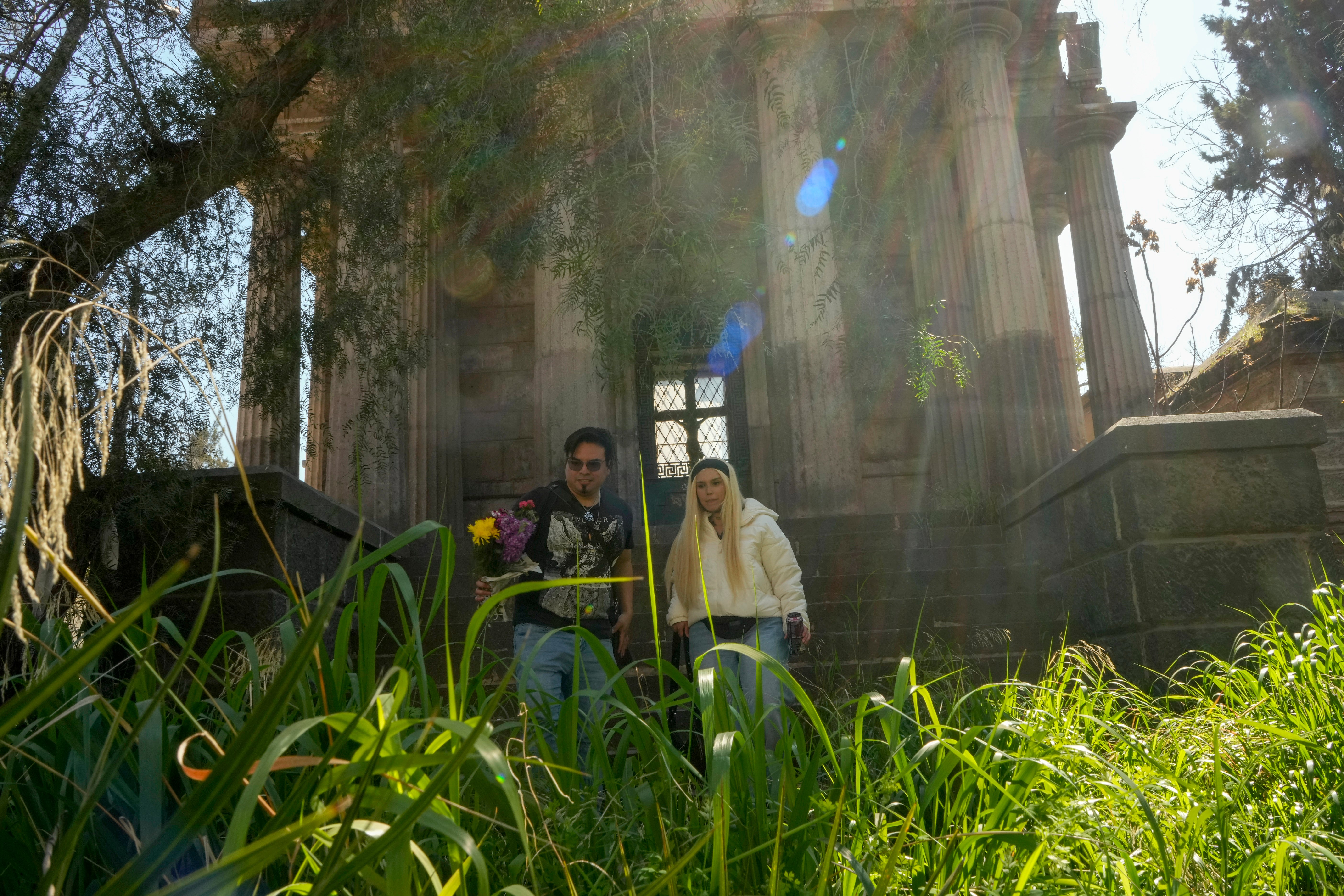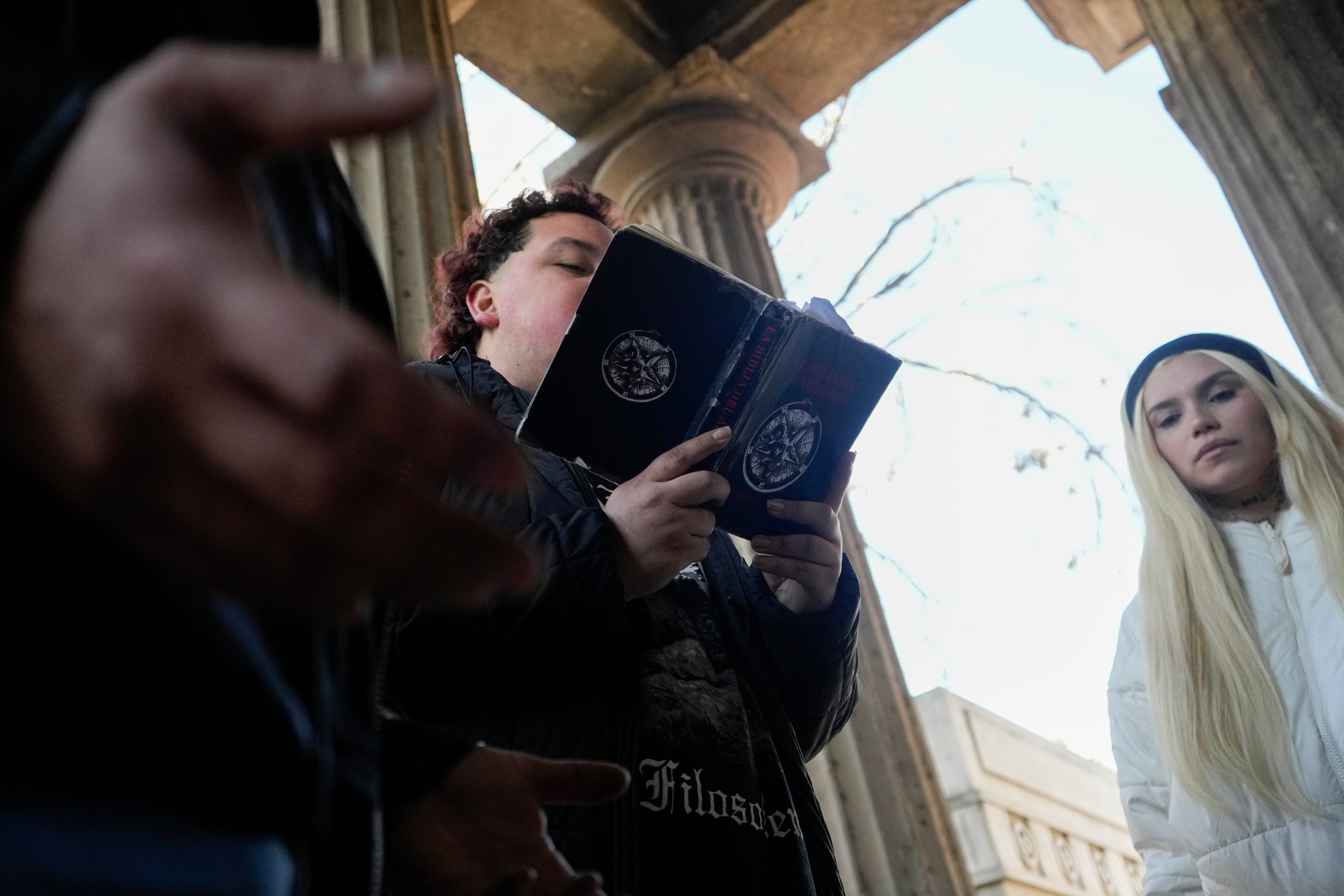The rise of the Temple of Satan in Chile
‘We don’t want people killing in the name of Satan’
Your support helps us to tell the story
From reproductive rights to climate change to Big Tech, The Independent is on the ground when the story is developing. Whether it's investigating the financials of Elon Musk's pro-Trump PAC or producing our latest documentary, 'The A Word', which shines a light on the American women fighting for reproductive rights, we know how important it is to parse out the facts from the messaging.
At such a critical moment in US history, we need reporters on the ground. Your donation allows us to keep sending journalists to speak to both sides of the story.
The Independent is trusted by Americans across the entire political spectrum. And unlike many other quality news outlets, we choose not to lock Americans out of our reporting and analysis with paywalls. We believe quality journalism should be available to everyone, paid for by those who can afford it.
Your support makes all the difference.Friday night in Downtown Santiago, the capital of Chile, a group of 15 people gather around a table, sharing a bottle of wine as the smell of tobacco and incense fill the air. Black candles burn on top of an altar decorated with chalices and knives. The members of the Temple of Satan are about to start a ritual.
Five years after the Satanic Temple of the United States made headlines — and unleashed a wave of panic — when it was designated a church, a similar organization in Chile, a conservative country where half of its population of 18 million identifies as Catholic, is asking the government to recognize them legally as a religious association.
Scholars, believers and residents consulted by The Associated Press note that Chile, where a long-lasting tradition of Catholicism has played a leading role in public discussions, is experiencing a crisis of faith, following revelations of multiple sexual abuse scandals within the Catholic church over the years.
“These types of organizations now feel that they have greater support to challenge what was virtually impossible before,” said Luis Bahamondes, a professor at the Center for Judaic Studies at the University of Chile. And that’s because, “until very recently, the Catholic Church enjoyed an unprecedented power. It had an opinion on everything: politics, economics, geopolitics, sexuality and education.”
Despite its name, The Temple of Satan: Satanists and Luciferians of Chile does not embark on sacrifices nor asks its congregants to worship the devil. Among its 100 members are people who work as publicists, firefighters, police officers, lawyers and psychologists, who have found in the organization a way to defy moral norms, dogmas and religious impositions.
While they embrace the term Satanist, they don’t revere or believe in Satan. Instead, they worship rationality, individualism, pleasure and the mundane life.
Rather than gods, they praise humankind.

“You are the owner of your present and future, there is no God that makes decisions for you,” said Haborym, a spokesperson for the group, during a walk through tombs and mausoleums at the General Cemetery of Santiago. He notes that the figure of Satan is purely symbolic and their rituals are performed “to bring out the emotions and leave the intellect aside.”
Haborym and other members of the Temple of Satan in Chile spoke on condition their real names not be used, particularly with many hold public-facing jobs, citing growing threats.
While Hollywood movies like “Rosemary’s Baby” and TV series such as “True Detective” helped to portray the idea of Satanists as linked to sacrifice, evil, pain and death, modern groups like Chile’s Temple of Satan are strongly against animal abuse, prohibit the affiliation of people with criminal records, see pleasures as a delight rather than a sin, and do not express their opinions unless asked.
“We don’t want people killing in the name of Satan,” said Haborym.
In order to join Chile’s Temple of Satan, applicants are requested to go through a lengthy process that includes filling out a form, showing proof of not having a criminal record, being interviewed by a special commission and, finally, being evaluated by a psychologist.

Once they are accepted, members can choose a new name — normally that of a demon or fallen angel — with which they will be identified inside the Temple and among other associates.
Founded in 2021, Chile’s Temple of Satan has 100 members, and more than 400 people applied to join in the past few weeks, said Haborym. The interest spiked at the end of July, when the group formally requested the country’s Ministry of Justice to legally recognize it as a religious association.
A media frenzy followed, unleashing a heated debate and causing a stir among Chile’s main religious denominations.
“The history of Satanism is well known (and) it has often been the cause of tragedies,” the leaders of several churches in Chile, including the Catholic, Anglican, Jewish and Evangelical, said in a joint statement.
Following the steps of the Church of Satan founded in 1966 by Anton Szandor LaVey, modern Satanists praise skepticism and logic over celestial or supernatural beings. Its followers are free to formulate their own beliefs, rites and spiritual practices.
Many self-described Satanists and Luciferians are atheists, others are witches or believe in the power of magic.
“We do accept that there are certain bases, both academic and esoteric, that give meaning to our existence and reality,” said Azazel, who quit Judaism four years ago and, one year later, founded the Temple of Satan of Chile.
His words resonate in the darkness of the chamber and are interspersed with chants, clapping, mantras and readings of passages from the Satanic Bible and the Bible of the Adversary, the main guidelines of the group.

Just like Azazel, others have turned to the Temple of Satan out of disappointment with traditional religions. The new congregants include not only occultists and esotericists, but also Catholics, Jews, Protestants and Evangelicals.
“In Satanism there are no solutions or absolute truths. You are your own god and you create your own reality,” said Kali Ma, a dentistry student who was born and raised in a Jehovah’s Witness family. “If we compare both, Jehovah’s Witnesses are the real sect,” she said. “They don’t let you do certain things, they tell you how to dress, what to do, how to behave, whether or not to grow a beard.”
Néstor da Costa, an expert in secularism and religion at the Catholic University of Uruguay, said the influx of people seeking answers through different perspectives might be linked to the search for less dogmatic approaches.
“It may be a readjustment of the religious side of people who leave Catholicism but continue to believe in something,” he said.
It is unclear if the Chilean government will legally recognize the Temple of Satan as a legitimate religious association, but its very existence has already helped to spark a discussion that until recently was unthinkable in this conservative society.
Demanding recognition is the ultimate expression of everything praised by Satanic aesthetics: the rebellion against the status quo and the breakup with deep-rooted traditions.
“We comply with everything that is requested of us as a religious entity,” says Haborym. “So there would be no reason to reject us beyond the fact that we’re a controversial figure.”